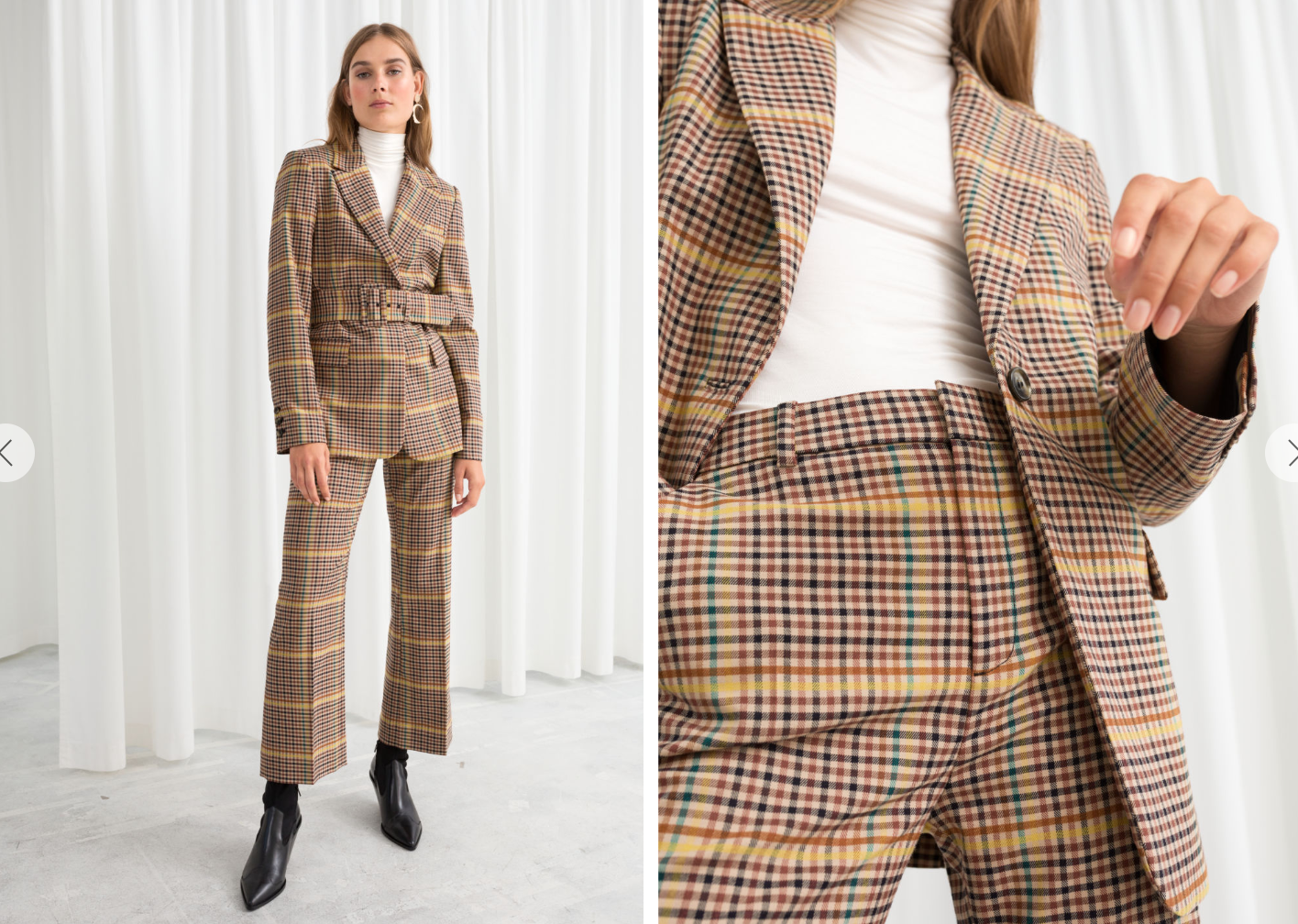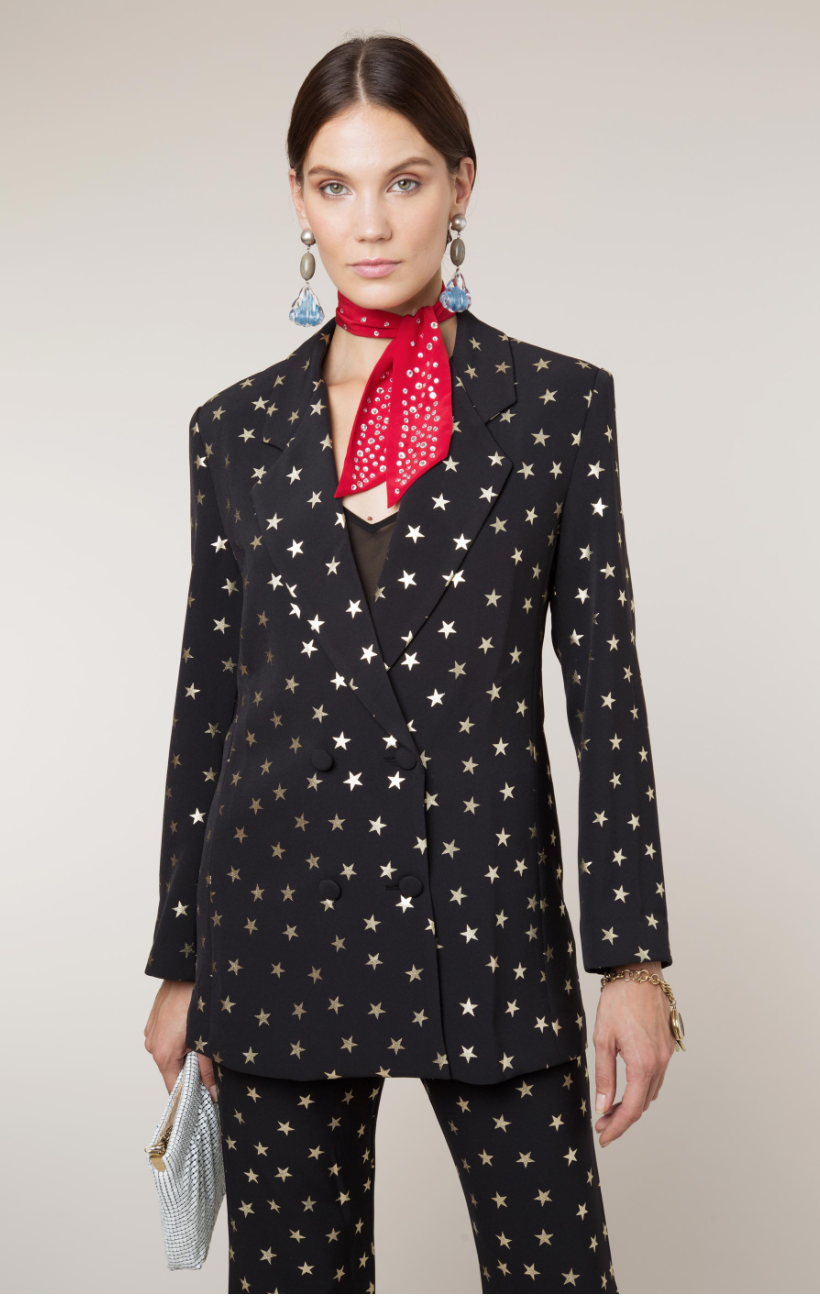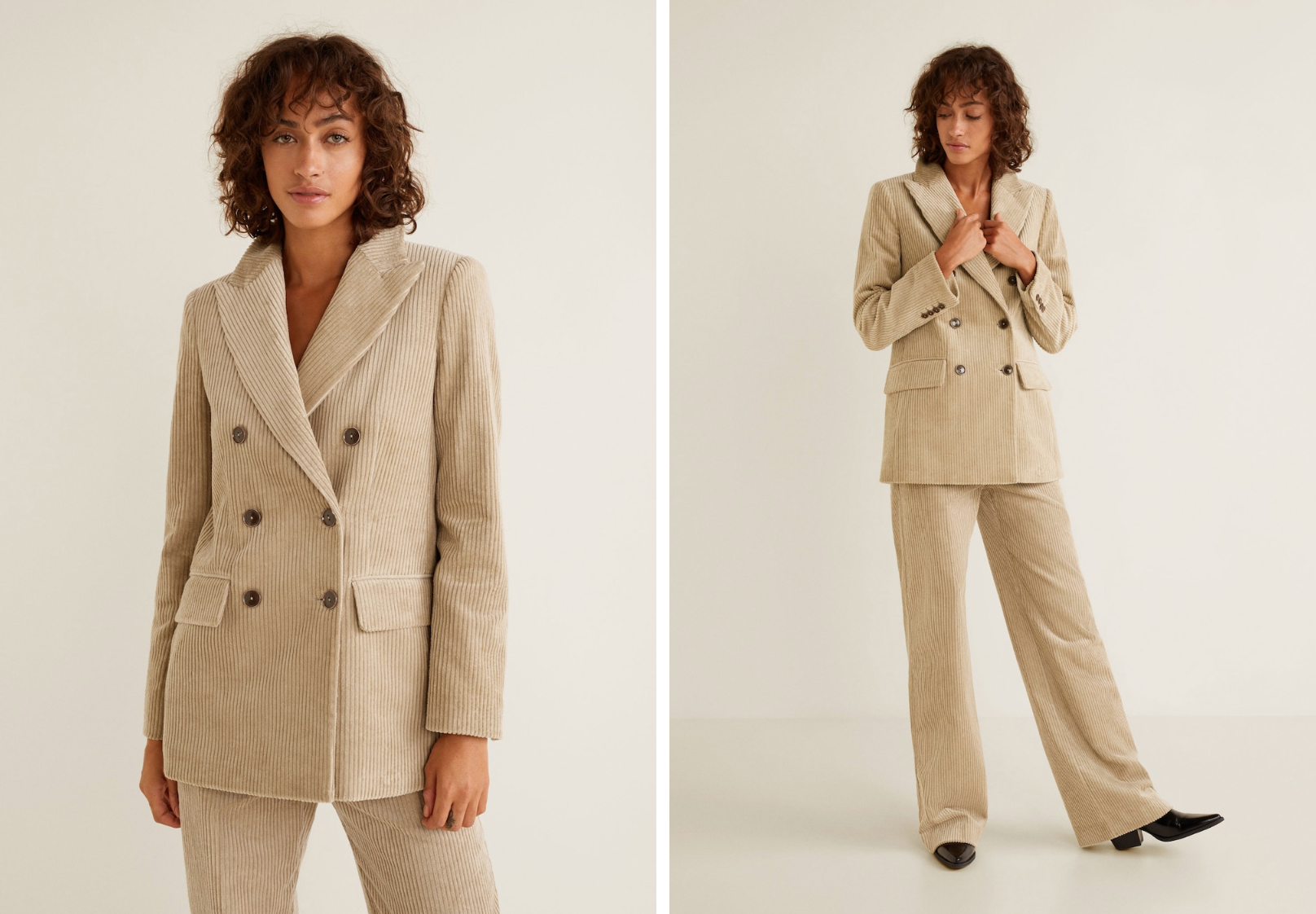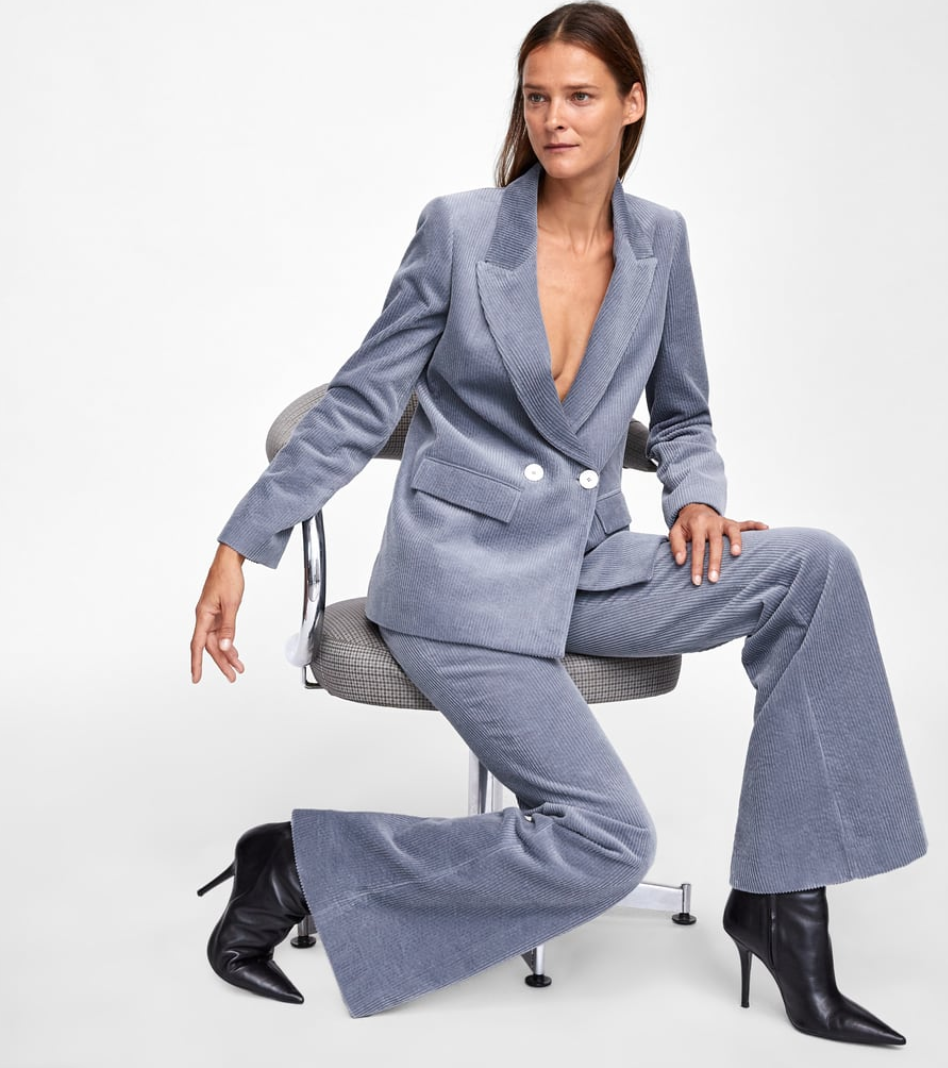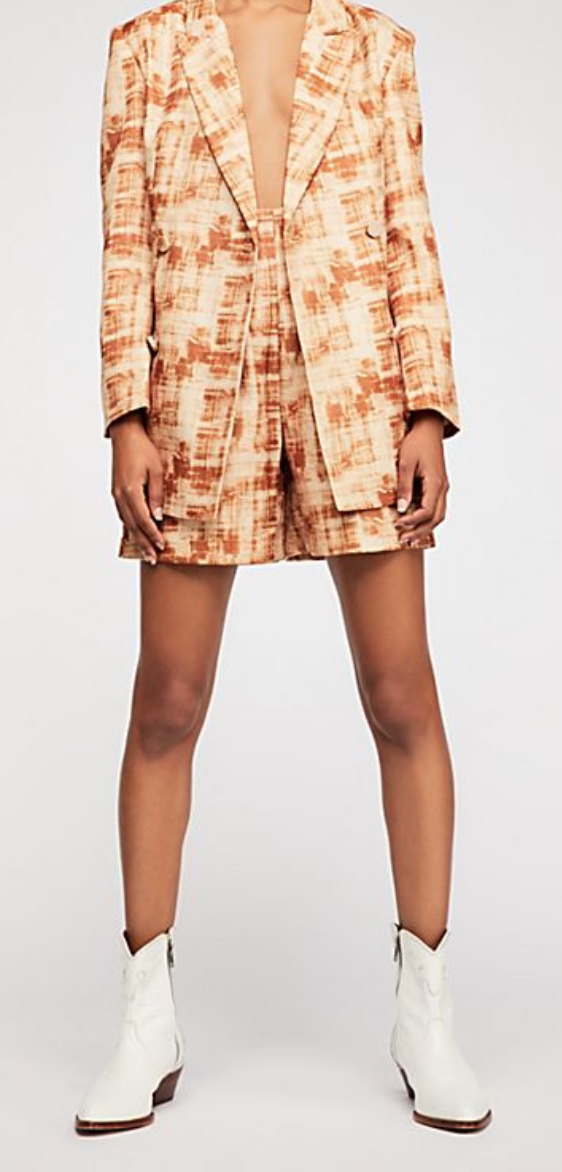I try not to cling to what celebrities wear. Between super-talented stylists and bottomless barrels of money, it usually takes very little individual creativity to pluck a prime outfit in tinseltown (icons like Tracee Ellis Ross and Jonah Hill aside). Still, every now and then, the famous ravage my carefully cultivated disregard for fabricated taste by wearing something too inspired to care who chose it or where it came from. Countless times, Lady Gaga stole my heart in confusing choices like meat dresses, drag personas, and her old-Hollywood aesthetic. And now, I can’t stop thinking about her breathtaking oversized Marc Jacobs suit. I think about it every day, gawking at pictures and giving into longing for giant piles of money just to buy myself an unlimited supply of suits that beautiful and big.
My infatuation with suits began in undergrad, when my best friend and roommate suggested I wear one to the senior class formal event. I didn’t have the courage then, but knew that my small chest gave me a unique opportunity to try to embrace a typically male aesthetic and actually accomplish some semblance of androgyny. I already wore mostly men’s clothing snagged at Savers through the cold winters – each season, my friends and I stocked up on men’s sweaters and button-ups and flannels. As I write, I’m sitting in an unbuttoned men’s flannel that I sort of stole from an ex-boyfriend and a pair of charcoal vintage men’s Levi’s purchased in London and later hemmed with a pair of scissors in a closet-sized flat.
I grew up with one brother and always felt more comfortable doing stereotypically “male” activities. I was boisterous, dubbed “The Voice of America,” by my mother, and I wore my brothers hand-me-downs as I called out commands in our yard. There’s comfort in wearing clothing that allows me to create my own meaning – defining myself and dressing to match. Men’s clothing provides that promise.
“Lady Gaga described the power in her pantsuit: “Today I wear the pants,” meaning, the symbolism of the pantsuit empowers women to take back ownership over their bodies and minds.”
Lady Gaga’s choice in an oversized suit seemed to offer her the same, which she outlined in a lauded speech at the Women in Hollywood awards, where my beloved super-suit first appeared. Pantsuits and power suits, often synonymous, are fashion icons when it comes to assigned meaning. Long before Lady Gaga swam in a Marc Jacobs suit, HRC was sewn into her uniform – the perfect pantsuit. Hillary Clinton credits the pantsuit for its professionalism, practicality, and power – partly because when you dress like the boys, they might just let you behave like the boys, too. In her speech, Lady Gaga described the power in her pantsuit: “Today I wear the pants,” meaning, the symbolism of the pantsuit empowers women to take back ownership over their bodies and minds.
Messages like these help women, and likely folks of all gender identities, find strength in the symbolism behind attire. For certain, I feel powerful building looks around the mens jeans, shirts, and jackets I own. But I also recognize that as much power as I’ve found in allowing fluidity in my femininity, changing the contours and visibility of my womanly body based on the sizes and structure of the clothes I wear, that’s not always androgyny.
“I love the idea of androgyny because it’s both and neither. It’s neutral and aggressive, careful and careless.”
Most women pulling on those pantsuits are striving for HRC and Lady Gaga’s purpose in sporting a suit: power dressing, the notion of “dressing for the job you want”. But more companies are banishing the business casual dress code, so what does it mean to power dress today? Women like Alexa Dell, Branding and Business Development Consultant at Bumble employ the suit to convey confidence, competence, and convertibility (a suit can take you from day to night!) However, as much confidence as a great outfit gives, that’s temporary. Cultivating those qualities in a meaningful, fulfilling way does not result from dressing well. I’d argue that the traditional definition and continued use of the current concept of power dressing prevents anyone from actually looking beyond the borders of the gender binary. Seeing someone for who they are, and the perception they want to convey, comes in part from leaving room for them to present their personal style. The people I’m most attracted to, personally and professionally, have the courage or desire to stand out, to be seen, instead of staying cast into the binary-conforming roles we’re assumed and expected to play.
I love the idea of androgyny because it’s both and neither. It’s neutral and aggressive, careful and careless. In a world that’s constantly begging for intellectualism around identity, and demanding a declaration of individual definitions of identity, it’s refreshing to revel in a subtle or symbolic act of resistance. Still, decisions around dressing are simply that: symbolism.
Deciding to don a shapeless men’s shirt or a short skirt doesn’t create structural change. On the subject of Gaga’s suit, in an article by Rebecca Jennings for Vox, feminist scholar Laura Porterwood-Stacer said:
But did it give her, a famous, wealthy white woman, a platform or any amount of power that she didn’t already have? Probably not. Does it give other girls and women any more power to be safe from misogyny and sexual assault? Almost certainly not. Fashion is, by nature, symbolic. Its power of transgression therefore usually remains in the realm of the symbolic. This isn’t to discount the value of images and speech that go against the status quo, but they don’t usually bring about material change to power structures in themselves, and it would be great if fashion critics recognized this and helped their readers to understand it as well.
I don’t think we’ll find the feminist answer to misogyny in embracing a more male or masculine aesthetic. We can’t prevent the indoctrination and small and large traumas of young boys, girls, and gender non-binary children by dressing in men’s-only attire. But the abstraction, or idea, of androgyny allows the acceptance of the notion of neither/nor over only this or that. An androgynous aesthetic means I am everything while escaping easy explanation, which feels like an ultimate triumph for fashion.
All the suits I’m craving this season:
